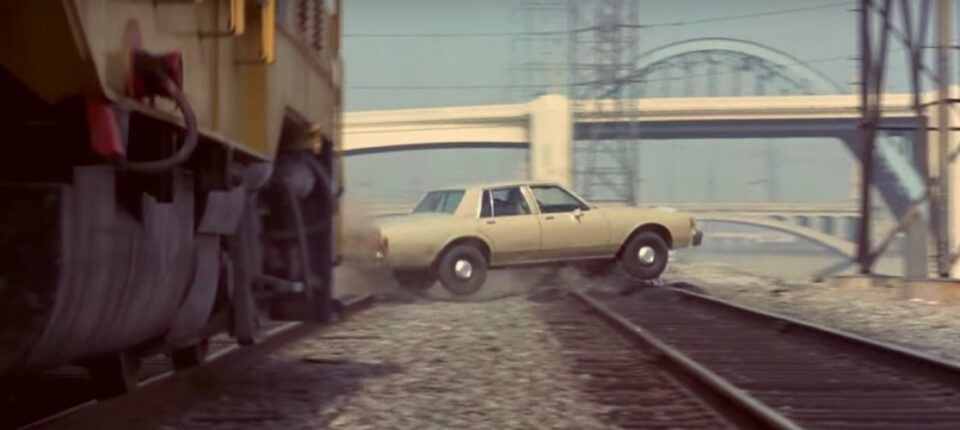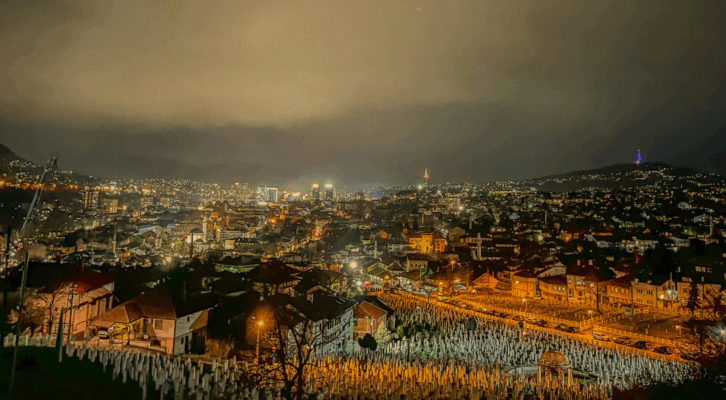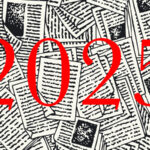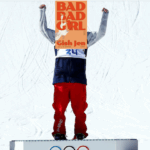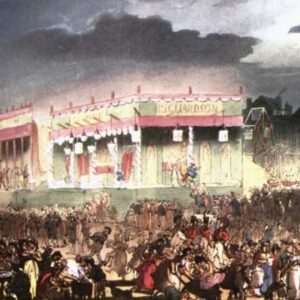In another era, the cinematic car chase was a purely analog affair: stunt performers would strap themselves into modified vehicles, then do their best to violate traffic norms and the laws of physics for the audience’s pleasure. But at a certain point, that changed. The demand for bigger spectacle meant studios turned more to digital trickery for vehicular mayhem, which is how you get Vin Diesel driving off an enormous dam to avoid an explosion in this summer’s “Fast X.”
If you want to be a traditionalist, you could argue that digital effects bleed the suspense out of those stunts and chases. You can strap a rocket to a car and send it into space to knock down a satellite before floating seamlessly back to Earth, but the unreality of it is the movie equivalent of empty calories; you’re left wanting something more substantial, the sense that real tons of steel are speeding and smashing together, putting lives at risk.
In that spirit, here are seven (great) crime movies that also helped define the old-school, real-steel-crashing car chase. This list is by no means comprehensive; give a couple of film critics a bottle of whiskey and leave them alone for a few hours, and they’ll come up with a long list of international titles featuring weird and wild vehicle pursuits. But these films’ chases influenced so much of everything that came after—and for the most part, they did it on real roads with real cars.
Bullitt (1968)
Fifty-five years after its release, “Bullitt” stands as the Platonic ideal of the “realistic” car chase movie, especially in a crime context. Its central mystery is largely forgettable, overshadowed by a) Steve McQueen’s cool as the eponymous San Francisco detective, and b) the central car chase, in which McQueen in a Ford Mustang alternatively eludes and pursues a Dodge Charger driven by a pair of taciturn hitmen:
The ten-minute chase sequence is a masterpiece of editing, especially when you consider it was shot over a matter of weeks and the Dodge Charger missed its mark during the climactic explosion. McQueen cemented his reputation as a daredevil movie star by doing much of the driving himself. But perhaps the reason the sequence has lasted so long in the public consciousness is the crunchiness: every time a car soars over a San Francisco hill and crashes down on its overtaxed suspension, you feel it in a visceral, unforgettable way.
The French Connection (1971)
As with “Bullitt,” the car chase in “The French Connection” is frequently cited as one of the greatest of all time, and its white-knuckle franticness is largely attributable to irascible director William Friedkin, who ordered a stuntman to careen through the streets of Brooklyn in a Pontiac with three cameras attached to its exterior and NYPD detective Randy Jurgensen in the back seat in case any cops tried to pull them over.
“As successful as the film was, I wouldn’t do that now. I had put people’s lives in danger,” Friedkin later told the New York Post. You can’t argue with the results, though: the chase feels dangerous and unpredictable, especially when the Pontiac barely misses baby carriages and sideswipes walls. Take a look:
The cop at the wheel, Detective Jimmy “Popeye” Doyle (Gene Hackman), doesn’t care for the niceties of traffic laws as he pursues a runaway subway train on the elevated tracks above the road—and he doesn’t mind shooting a suspect in the back during the chase’s finale. According to Jurgensen, the NYPD saw an uptick in job applications after the movie came out.
The Driver (1978) and Drive (2011)
Walter Hill’s crime movie, critically lambasted when it first debuted, has seen its reputation improve in recent years. Hill understands a little something about genre (to put it mildly), and the film boils down the getaway flick to its absolute essentials: you have a Driver (Ryan O’Neal), a Detective (Bruce Dern), and a variety of other scumbags. Hill demolished his share of vehicle tonnage during the chase sequences, which descend into rubber-burning, cruiser-flipping ballets.
“Hill gives The Driver’s cars weight, value beyond the monetary, a skin so that when they’re flayed in flight, scraped against concrete or their brothers, you wince in sympathy,” Walter Chaw writes in his brilliant “A Walter Hill Film,” an incredibly dense analysis of all the director’s works. “If you watch the movie with a group, you’ll find them leaning into the curves and away from the crashes as if forces of gravity were working against them at the turns.”
Watching “The Driver” means you can never regard Nicolas Winding Refn’s “Drive,” which is equally iconic, in quite the same way again, simply because Refn paid homage to so much of Hill’s movie, down to the criminals’ reactions in the Driver’s back seat during the opening chase:
At least Refn is similarly dedicated to giving his cars a sense of terrible weight and speed. His Driver, played by Ryan Gosling as less a taciturn hero than a stone-cold psychopath, doesn’t really have the same affinity for guns as the thugs around him—but he’s more than happy to use his car as a weapon against those who double-cross him.
To Live and Die in L.A. (1985)
Friedkin’s second stab at a memorable car-chase film, “To Live and Die in L.A.,” allows him to play with L.A.’s unique features, including the mega-highways and the dry riverbed. The main chase, just as frenetic as “The French Connection,” albeit with a higher budget and dozens of stunt performers, and a twitchy Secret Service agent played by William Petersen instead of a dour, sweaty Gene Hackman:
Whether this chase is better than the one in “The French Connection” is a matter of taste.
Ronin (1998)
This France-set thriller, directed by John Frankenheimer, is blessed with two full-scale chase sequences: the first, midway through, involves multiple cars (and a van) barreling down country roads, as Robert De Niro and his merry band of former-spies-turned-criminals attempt to wrest a mysterious briefcase from a convoy of heavily armed men. The second involves just two cars speeding at incredible velocity through traffic-clogged Parisian streets, and it’s even tenser:
Frankenheimer relies on every classic cinematic technique, from adjusting the cameras’ speed (undercranking to fewer frames per second makes everything seem faster) to low-level P.O.V. shots from the cars’ bumpers to rapid cuts. In a nice twist on so many classic car chases, though, the drivers in the Paris sequence (De Niro in one car; Natascha McElhone in the other) alternate between merely tense to outright terrified as the chase grows in speed and intensity, heightening the impact of all that crunching, high-speed metal.
Death Proof (2007)
Originally packaged as a double feature alongside Robert Rodriguez’s “Planet Terror,” Quentin Tarantino’s “Death Proof” attempts to subvert the slasher genre. “I realized I couldn’t do a straight slasher film, because with the exception of women-in-prison films, there is no other genre quite as rigid,” he told an interviewer after the film came out. “And if you break that up, you aren’t really doing it anymore. It’s inorganic, so I realized—let me take the structure of a slasher film and just do what I do.”
Tarantino’s ultimate idea: structure a story around Stuntman Mike, who modifies cars with a roll cage to make them “death proof” during a crash. Mike cruises the night, looking for young women to crash into (or, in one memorable sequence, smash against his dashboard). But things go topsy-turvy when he encounters three young women in a 1970 Dodge Charger who won’t submit to his predations; instead, they turn the pursuer into the pursued:
Tarantino is obviously a huge fan of old-school filmmaking, which meant real stunts with real cars on real roads—an achievement in an era where cinematic car chases had become increasingly powered by computer graphics. On top of that, the chase is remarkably funny in a bleak sort of way, as Mike transforms from vicious wolf into whining, shrieky victim.

